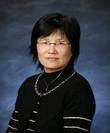Day 1 :
Keynote Forum
Scott Umlauf
Senior Director of Product Development at VaxInnate Corporation,
USA
Keynote: Novel quadrivalent influenza vaccine produced in E. coli elicits protective HAI titers in healthy adults
Time : 09:35-10:05

Biography:
Scott Umlauf has completed his PhD from the University of Wisconsin-Madison and carried out Postdoctoral studies at the National Institutes of Health in the lab of Ronald Schwartz. He is currently the Senior Director of Product Development at VaxInnate Corporation, a biotechnology company which combines innate immune stimulation with disease antigens to generate novel fusion protein vaccines.
Abstract:
We have produced a novel, quadrivalent influenza vaccine candidate comprising the globular head domain of the HA antigen fused standard production strains of E. coli. Due to the presence of flagellin, which serves as an innate immune stimulator via TLR5,the seasonal vaccine does not require exogenous adjuvant. Optimal formats of HA globular head length and insertion sites within flagellin were selected by a panel of in vitro and in vivo methods, including the generation of HAI titers in multiple animal species. As the product consists of soluble monomeric proteins, we have also developed a suite of novel potency methods. The release and stability assay package measures the concentration of the vaccine components by reversed phase UPLC, the biological activity of both HA and flagellin moieties by Capture ELISA and the presence of neutralizing epitopes by a Neutralization Inhibition Assay (NIA). A rabbit model of toxicology has been developed which is sensitive to the innate stimulation of flagellin and generally predictive of the appearance of clinical symptoms by vaccine format and dose. A prototype quadrivalent vaccine was tested in young healthy adults. Total dose levels of 8-12 mcg (2-3 mcg per component) were found to be safe and immunogenic. Seroprotection levels varied from 91-100% across the 4 strains. Serocoversion rates ranged from 71-100% for subjects with starting titers <40.
Keynote Forum
Vadim Bichko
Vice President and Head, Infectious Diseases at ChemDiv, Inc,
USA
Keynote: Pre-clinical characterization of AV5080, a new oral influenza neuraminidase inhibitor, active against oseltamivir-resistant virus
Time : 10:05-10:35

Biography:
Vadim Bichko is Vice President and Head, Infectious Diseases at ChemDiv, Inc. (San Diego, US). He also serves as a Chief Scientific Officer of Viriom, Ltd.(US), a ChemDiv-Roche Alliance company, developing HIV and HBV antivirals. He received his PhD in Molecular Biology in 1986 from the University of Latvia in Riga, Latvia, and subsequently held various academic positions at Fox Chase Cancer Center in Philadelphia, US, Max-Plank Institute for Biochemistry in Munich, Germany, and the Institute of Organic Synthesis in Riga, Latvia. He is the author of numerous publications and patents in molecular virology.
Abstract:
This study is focused on the discovery and development of new oral small molecule influenza neuraminidase inhibitors, active against Oseltamivir-resistant virus strains. A number of compounds was designed, synthesized and evaluated for antiviral properties in vitro and in vivo. A 3D Molecular docking, assisted by a pharmacophore model, was applied to rank compounds within different series by the predicted antiviral potency. The most promising compound, AV5080[(3R,4R,5S) 5-[(diaminomethylene)amino] 3-(1-ethylpropoxy) 4[(fluoroacetyl)amino]cyclohex-1-ene-1-carboxylic acid], is currently in pre-clinical development for treatment of influenza. This compound was stable in rat, dog and human plasma (>93% remaining after 24 h). AV5080 demonstrated picomolar activity against influenza neuraminidase in vitro, similar or better than Oseltamivir (the IC50 values of 0.03 nM and 0.07 nM against NA of A/duck/Minnesota/1525/1981, H5N1, and A/ Perth/265/2009, H1N1, 275H, respectively). In the influenza-infected cultured MDCK cells, this compound demonstrated high potency against influenza strains A and B (EC90 = 0.71±0.24 nM, 28 times lower than that for Oseltamivir against A/California/07/2009/H1N1 isolate). Most importantly, AV5080 was highly active against Oseltamivir-resistant influenza strains. The efficacy of AV5080 in mice, challenged with a lethal dose of A/Aichi/2/1969/H3N2 isolate, was similar to that of Oseltamivir (90% and 100% survival rate at 25 mg/kg dose). In the safety pharmacology studies with AV5080 in vitro and in vivo (AMES test, chromosomal aberration, hERG test), no signs of geno-or cardiotoxicity was observed. In summary, AV5080 is a promising novel oral drug candidate for treatment of influenza, including Oseltamivir-resistant virus strains. Further preclinical development of AV5080 is warranted.
Keynote Forum
Joshua DiNapoli
Deputy Director of Viral Immunology, Sanofi Pasteur Biologics LLC,
USA
Keynote: Universal influenza vaccines: Prevention of infection by matched and mismatched strains
Time : 10:55-11:25

Biography:
Joshua DiNapoli received his PhD in Microbiology and Immunology in the lab of Dr. Robert C. Rose at the University of Rochester School of Medicine and Dentistry in 2005. He went on to perform his post-doctoral work in the lab of Dr. Peter L. Collins at the National Institute of Allergy and Infectious Diseases from 2005 to 2010.He has since been with Sanofi Pasteur, where his current roles are Deputy Director of Viral Immunology and Research Lead for the Universal Flu Vaccine program.
Abstract:
Annual vaccination against seasonal Influenza A and B virus subtypes with well-matched inactivated virus (INV) vaccines are highly effective against upper respiratory tract (URT) Influenza infection and induced disease. Protection against infection is thought to be mediated principally by neutralizing antibodies targeting the receptor binding site (RBS) of the hemagglutinin globular head (HA1). Immune pressure on HA1 results in antigenic drift, necessitating worldwide surveillance with subsequent WHO recommendations on strain selection for manufacture of forthcoming seasonal influenza vaccines. rnrnThe development of Universal Influenza Vaccines (UIV) that could protect against matched as well as drifted or mismatched strains would provide significant improvement over standard of care (SOC). Additionally, a target product profile that also offers long-lasting immunity would be a substantial advantage of current annual vaccination practices, potentially enabling year-round manufacture. UIV that induce both breadth and durability across multiple influenza seasons would be paradigm shifting for the Influenza field and offer significant health care benefits. rnrnAs part of our universal influenza vaccine program, and using the H1 subtype as our proof of concept (POC), we have built consensus-based, computationally optimized broadly reactive antigens (COBRAs). These prototypes have been demonstrated to fold properly, bind conformation-specific mAbs (HA1 & HA2) as well as agglutinate red blood cells. Prototype H1N1 HA proteins were presented on virus-like particles (VLPs), tested in-vivo, and determined to elicit broadly cross-neutralizing functional antibody responses in multiple species and protect against homologous and heterologous virus challenge. This work demonstrates that we can induce broadly-reactive, protective immunity against H1N1 isolates using a consensus-based HA strategy focusing on the globular head, and has important implications for future universal antigen designs.
- Track 1: Flu Vaccine & Vaccination Track 4: Molecular Biology of Influenza Viruses Track 9: Influenza and Antivirals Track 10: Therapeutic Approaches and Targets for Viral Infection

Chair
Pamuk Bilsel
Chief Scientific Officer, FluGen, Inc, USA

Co-Chair
Masayuki Noguchi
Hokkaido University, Japan
Session Introduction
Uri Galili
UMass Medical School
USA
Title: A novel approach for inhibiting progression of flu virus infection at early stages of the disease by inhalation of -gal/sa liposomes
Time : 11:25-11:45

Biography:
Uri Galili has completed his PhD at the Hebrew University Medical School (Jerusalem) and post-doctorate at the Karolinska Institute (Stockholm). He conducted independent research as a professor at UCSF, MCP-Hahnemann, Rush and UMass Medical Schools. He has published 199 papers.
Abstract:
The proposed therapy aims to accelerate healing in flu patients treated at early stages of the disease and accelerate induction of a protective immune response, thereby preventing further complications. The therapy is based on inhalation of aerosolized biodegradable liposomes called -gal/SA liposomes that present multiple carbohydrate epitopes of two types: -Gal epitopes with the structure Gal1-3Gal1-4GlcNAc-R and sialic acid (SA) epitopes with the structure SA6Gal1-4GlcNAc-R. This treatment exploits the ability of flu virus hemagglutinin to bind to SA epitopes and ability of the natural anti-Gal antibody to bind to -gal epitopes. Anti-Gal is the most abundant natural antibody in humans, constituting ~1% of immunoglobulins. Inhaled -gal/SA liposomes land in the mucus and surfactant coating the respiratory tract and act as a “decoy”. They bind flu virus via hemagglutinin/SA epitope interaction, thereby slowing or preventing further infection of respiratory epithelial cells. Concomitant anti-Gal binding to -gal epitopes on -gal/SA liposomes activates the complement system and generates chemotactic complement cleavage peptides (e.g. C5a) that recruit multiple macrophages to the liposomes. The recruited macrophages internalize the liposomes and flu virus bound to their SA epitopes as a result of Fc/Fc receptor interaction between Fc of anti-Gal IgA and IgG on -gal/SA liposomes and Fc receptors on macrophages. Internalized virus is destroyed within the macrophages by lysosomes. Recruited macrophages further function as antigen presenting cells that process immunogenic peptides of the internalized virus, transport them to regional lymph nodes and present these immunogenic peptides on MHC molecules for activation of CD4+ and CD8+ T cells specific to the infecting flu virus. Activated CD4+ T cells function as helper T cells that help B cells to produce antibodies which neutralize the virus and thus inhibit its ability to infect respiratory epithelial cells. Activated CD8+ T cells differentiate into cytotoxic T cells (CTL) that kill virus infected epithelial cells thus preventing further progression of the viral infection. These combined effects of inhibiting viral infection of epithelial cells and induction of rapid anti-flu B cell and T cell protective immune responses may shorten the disease duration, attenuate its severity and decrease complications in the respiratory system.
Pamuk Bilsel
Chief Scientific Officer, FluGen, Inc,
USA
Title: M2SR, a single replication universal flu vaccine
Time : 11:45-12:05

Biography:
Pamuk Bilsel, Ph.D. is Chief Scientific Officer at FluGen, Inc. Prior to joining FluGen in 2008, she was at Pharmexa-Epimmune where she developed DNA vaccines against influenza and malaria. At Pentamer Pharmaceuticals, a San Diego start-up, she worked on subunit vaccines using virus-like particle technology. Preceding that Dr. Bilsel was at Aviron generating live attenuated influenza vaccine strains in addition to studies with the cold-adapted influenza vaccine which was eventually launched as MedImmune’s FluMist®. Dr Bilsel received her Ph.D. from the University of Nevada, Reno and did her post-doctoral training at St. Jude Children’s Research Hospital with Dr. Yoshihiro Kawaoka.
Abstract:
Influenza (flu) virus causes a respiratory disease resulting in over 200,000 hospitalizations and ~ 36,000 deaths per year in the US Flu vaccines have remained virtually unchanged for decades. Despite the annual update of the three hemagglutinin (HA) vaccine antigens to match the circulating influenza strain, current vaccine efficacy is estimated to be ~60% across the population as a whole and much less for the elderly. Flu vaccine protection is sub-optimal and substantially lower than for most routinely recommended vaccines The low efficacy rates are due primarily to the relatively poor immune response provided by both inactivated and live vaccines. There is an urgent need for highly protective flu vaccines that provide broad-spectrum immunity across all segments of the population. FluGen has developed a new vaccine, M2SR (Single Replication), which exploits the best features of both inactivated and live attenuated influenza vaccines. Like the inactivated vaccine, it elicits a strong humoral response against the major neutralizing antigen, the HA. Similar to the live attenuated influenza vaccine, it is administered intranasally to mimic a natural infection and induce broad-spectrum immunity including mucosal and cell-mediated responses. The novelty of M2SR is that the vaccine virus presents multiple antigen targets to the immune system like a wild-type virus and activates the immune system without production of progeny virus. We have shown that the M2SR vaccine provides broad-spectrum, long-lasting cross-protection against multiple influenza subtypes including H5N1 in mice and ferrets.
Amali E Samarasinghe
University of Tennessee Health Science Center,
USA
Title: Acute allergic inflammation protects against influenza A virus induced morbidity in mice
Time : 12:05-12:25

Biography:
Amali E Samarasinghe completed her PhD in 2010 through a Presidential Fellowship from North Dakota State University in Molecular Pathogenesis under the tutelage of Dr. Jane Schuh. She completed a Postdoctoral fellowship in 2012 under the mentorship of Dr. Jonathan McCullers at St. Jude Children’s Research Hospital in Infectious Diseases. She is now a faculty member in the Department of Pediatrics at the University of Tennessee Health Science Center in Memphis and her laboratory focuses on delineating immune pathways of respiratory infections in allergic hosts.
Abstract:
Asthma is a debilitating disease of the airways that affects over 200 million people worldwide. The asthma burden in the population, marked by disability and death, is highest in young and senior adults. Asthma was identified as a major risk factor associated with hospitalization during the 2009 influenza pandemic. However, retrospective analyses noted that asthmatics were less likely to suffer from complications associated with or die from influenza. Reasons for these seemingly counterintuitive findings were unclear. In order to study this effect in the laboratory setting, we aimed to generate a mouse model system of asthma and influenza co-morbidity using an Aspergillus fumigatus-induced mouse model of asthma and A/CA/04/2009 pandemic H1N1 strain of influenza virus. By varying the time of viral infection, we determined that mice infected with pH1N1 during allergic airways inflammation were protected against influenza measured by body weight loss. While early viral replication kinetics was similar between the asthma and flu mice compared to flu-controls, mice with asthma were able to clear virus from the lungs sooner than those without asthma. This clearance correlated with the infiltration of virus-specific CD8+ T cells. Influenza virus is cytopathic especially to the bronchial epithelial cells. We noted that bronchial epithelia of mice in the asthma and influenza groups retained their “healthy” morphology while cells in the flu-control animals were necrotic. Using human bronchial epithelial cells from healthy and asthmatic donors, we determined that in spite of viral replication, epithelial cells from asthmatic donors were resistant to influenza virus induced damage thereby highlighting the clinical relevance of our findings. Ongoing studies are aimed at identifying mechanisms that mediate altered outcomes during influenza in acute inflammation of allergic airways.
Zhongying Chen
Senior Scientist, MedImmune
USA
Title: Identification of critical residues in the hemagglutinin (HA) that impact the replication, stability and immunogenicity of live attenuated influenza vaccines
Time : 12:25-12:45

Biography:
Zhongying Chen received her Ph.D. in Molecular Biology and Biochemistry from Rutgers University, New Jersey, USA. She is currently a Senior Scientist at MedImmune, the biologics unit of AstraZeneca. During her tenure at MedImmune, she has been a technical lead in the research and development of live attenuated influenza vaccines (LAIV) for both seasonal and pandemic influenza viruses. She has over 25 publications in peer-reviewed scientific journals and several patents on the innovative improvement of the LAIV production.
Abstract:
The intranasally administrated live attenuated influenza vaccine (LAIV) has been proven to be effective in preventing influenza virus infection in humans. Seasonal LAIV containing influenza A (H1N1, H3N2) and B subtypes require annual update to antigenically match drifting influenza viruses. It is often challenging to rapidly generate the vaccine seeds that replicate efficiently with high yield in embryonated chicken eggs, immunogenic in ferrets, antigenically accurate and genetically and phenotypically stable. The low yield of H1N1pdm09 viruses even after egg adaptation has posed a challenge for vaccine development since 2009. By cell culture adaption and reverse genetics, we successfully generated the high yield A/CA/7/2009 LAIV by introducing two additional amino acid substitutions (K119E and A186D) in the HA protein. The two changes also greatly improved the growth of the currently circulating 2013 and 2014 H1N1pdm viruses (6B genetic group) without affecting the antigenicity and immunogenicity of the vaccine virus. Moreover, a single amino acid in the HA2 region of A/CA/7/2009 that affected fusion pH and virus acid/thermal stability was identified, which provided the genetic and structure basis for improving the stability of LAIV. The frequently drifting H3N2 viruses also grow poorly in eggs. Different egg adaptation amino acid changes (e.g. I140K, L194P, G186V, H156Q, H183L, S219F/Y, I226N, N246H) found in different H3N2 strains are required for virus to grow efficiently in eggs. Thus, multiple vaccine variants generated from egg adapted wild-type viruses were assessed for their immunogenicity and antigenicity in ferrets. We found that the L194P often reduces the immunogenicity and G186V/H156Q impacts the antigenicity of the vaccine viruses. In the most recent season, new egg adaptation changes were found and their impact on the characteristics of vaccine viruses will be also discussed.
Fu Shi Quan
Kyung Hee University School of Medicine
Korea
Title: Influenza virus-like particle vaccines elicit protective immunity in the early stage of vaccination
Time : 12:45-13:05

Biography:
Fu Shi Quan received her PhD degree at Korea University Seoul, Korea and had Postdoctoral training in the laboratory of Professor Richard W Compans (Department of Microbiology & Immunology, School of Medicine, Emory University, GA, USA). Currently, she is a Professor in Department of Medical Zoology at Kyung Hee University School of Medicine. She is recognized as an expert in influenza VLP vaccine research.
Abstract:
It is known that influenza vaccine takes about two weeks after vaccination for antibodies to develop in the body that protect against influenza virus infection. However, the protective immunity induced in the much earlier stage of vaccination is unknown. In this study, a VLP vaccine comprising hemagglutinin (HA) and M1 from the A/California/04/09 were used and its ability to induce protective immunity during the early stage of vaccination was assessed. A single intramuscular vaccination with VLPs provided the protection at day 4 and 7 post-vaccination against lethal virus challenge with only moderate body weight loss. VLP vaccination induced significantly higher levels of IgG antibody responses and high hemagglutinin inhibition (HAI) titers at day 4 post-vaccination. At day 7, predominant IgG2a antibody responses and viral neutralizing antibodies were induced. These immune responses were found to be closely correlated with protections. Upon challenge on day 4 and 7 post-vaccination, lung IgG antibody responses and recall IgG antibody-secreting cell responses were induced. Lung virus titers decreased significantly at day 7 compared to that at day 4 post-vaccination. The lung virus titer at day 4 post-vaccination also decreased significantly compared to naïve control. This study demonstrates that VLP vaccination provides effective protection in the early stage of vaccination. The results indicate that VLPs can be developed into an effective vaccine that confers protection in the very early stage of vaccination.
Michael M.C. Lai
China Medical University
Taiwan
Title: Host factors for influenza virus replication
Time : 13:45-14:05

Biography:
Dr. Lai is a chair professor in China Medical University, Taiwan. He received his M. D. Degree in 1968 from National Taiwan University College of Medicine, Taiwan. Afterwards he completed his Ph. D in molecular biology in 1973 from University of California, Berkeley, California. He spent most of his academic career at University of Southern California School of Medicine, Los Angeles, California as a faculty member, culminating in his appointment as a Distinguished Professor in 2003. He later assumed various responsible positions in Taiwan, including Vice President, Academia Sinica (2003-2006) and President, National Cheng Kung University (2007-2011). His research covered coronavirus, hepatitis C and D viruses and more recently influenza virus. His profile is credited with a number of highly prestigious awards including Lifetime Achievement Award, Society of Chinese Bioscientists in America (2009), Lifetime Achievement Award, University of Southern California (2008), Presidential Science Prize, Republic of China (2013) and appointment as a Howard Hughes Medical Institute Investigator (1990-2003) and was elected an academician of Academia Sinica in 1992. He is also a fellow of American Academy of Microbiology and a Fellow of Third World Academy of Science.
Abstract:
Influenza is a growing global concern threatening human health worldwide. Its prevention is compromised by the rapid evolution of the virus and lack of a universal vaccine. The effectiveness of influenza treatment is also limited by the scarcity of good antiviral agents and emergence of resistant viral strains. Host factors required for influenza virus replication may provide alternative targets for antiviral or anti-influenza agents. To this end, we performed several rounds of pooled genomic RNAi screening to identify host factors involved in influenza virus infection, replication and pathogenesis. Besides the previously reported factors involved in virus entry, we identified additional factors involved in other viral replication steps, including a E3 ubiquitin ligase ITCH, which is required for virus uncoating (the release of viral RNP from the endosome during virus entry). This protein is incorporated into endosome together with incoming virion, and ubiquitinates viral M1 matrix protein, thereby releasing viral RNA into cytosol and the nucleus. Several RNA-binding proteins involved in RNA transcription and/or replication have also been identified. Interestingly, several of these proteins are also ubiquitin ligases and interact with viral RNA polymerases. Surprisingly, several specific cell surface membrane proteins are also required for virus entry, suggesting that the binding of virion to sialic acid residue alone is not sufficient to trigger virus entry. They may be involved in the virus internalization steps. The detection and characterization of these factors give new insights into the mechanism of viral replication and provide potential new targets for antiviral drugs.
Vladimir Litvak
University of Massachusetts Medical School
USA
Title: Systems biology studies to dissect the regulatory mechanisms of antiviral immunity
Time : 14:05-14:25

Biography:
Vladimir Litvak, PhD is an Assistant Professor in the Department of Microbiology and Physiological Systems at the UMass Medical School. He received his PhD from the Weizmann Institute of Science and completed the Post-doctoral training at the Institute for Systems Biology in the laboratory of Dr. Alan Aderem. His primary research goals are directed toward understanding the transcriptional and epigenetic mechanisms that regulate the development and function of macrophages in health and disease. The Litvak Lab employs a systems biology approach to define molecular pathways that govern the functional role of macrophages in virus-host interactions and in the pathogenesis of inflammatory disorders.
Abstract:
The innate immune system is necessary to protect the host against infection; however, when not properly regulated, it can lead to inflammatory disease. Consequently, diverse and potent regulatory mechanisms have evolved to enable tight control over the protective innate immune responses. Our systems biology studies of antiviral immunity revealed that antiviral immune responses are controlled by gene regulatory circuits. In these circuits, dynamic interplay of transcription and epigenetic factors determines the temporal dynamics and expression profile of critical antiviral effectors and thus ensures appropriate host response to invading pathogens. Importantly, viral pathogens, including various influenza viruses, are equipped with a wide range of virulence factors to subvert host protective responses and to establish a niche for their survival and proliferation. Viral virulence factors dynamically interact with host transcription factors and chromatin remodeling proteins to rewire and reprogram host gene regulatory circuits. Elucidating the mechanisms and consequences of influenza virus-induced reprogramming of host gene regulatory networks is critically important for the discovery of novel antiviral therapies and rational vaccine design and development.
Rupert Beale
University of Cambridge
UK
Title: Subversion of Autophagy by Viral LC3 Interacting Regions
Time : 14:25-14:45

Biography:
Rupert Beale began his interest in host:pathogen interactions when he worked with Professor Douglas Fearon during his medical degree. He subsequently completed his PhD on the AID and APOBEC cytidine deaminase proteins with the late Professor Michael Neuberger at the MRC Laboratory of Molecular Biology. During his higher medical training in nephrology, he returned to the LMB to work with Dr Felix Randow, collaborating with Professor Paul Digard’s group toinvestigate the role of autophagy in influenza replication. He is now starting his own group in the Division of Virology in Cambridge, funded by a MRC Clinician Scientist Fellowship.
Abstract:
Autophagy can provide a cell with nutrients in time of starvation by engulfing cytoplasmic contents in a double membrane, targeting the autophagosome to a lysosome, and utilizing the resultant lipids and amino-acids for metabolism. This process has been adapted to form a critical component of cellular self-defence, with invading micro-organisms targeted for autophagy by adaptor proteins that can bind both to danger signals in the cytosol, and to the LC3 molecules that decorate the autophagosomal membrane (Boyle and Randow, 2013). Binding to LC3 typically takes place via a LIR (LC3 Interacting Region), a short motif comprising a hydrophobic beta-strand and surrounding acidic residues. We have discovered that influenza M2 contains a LIR at its C-terminal tail (Beale et al., 2014). This enables influenza to subvert autophagy, and promotes the formation of stable virions. M2 also has a LIR independent function to subvert autophagy, inhibiting fusion of autophagosomes with lysosomes (Gannage et al., 2009). We propose that influenza M2 targets autophagosomes to the plasma membrane to increase resources for budding, and present evidence that other enveloped viruses also encode LC3-interacting regions.
X James Li
CEO of Cellex Incorporated
USA
Title: A simple and rapid assay for determination of susceptibility of influenza virus to neuraminidase inhibitors
Time : 14:45-15:05

Biography:
X James Li completed his PhD at Washington State University and Postdoctoral studies from Harvard University (Cambridge, MA) and Stanford University(Carnegie Institution). He is the Founder and CEO of Cellex, a company focusing on development of diagnostic technologies and products. He is also the Founder and Chairman of the Board of Avioq, a company focusing on late stage diagnostic product development and GMP manufacturing; Avioq has a couple of FDA approved or licensed products.
Abstract:
Zanamivir (Relenza®) and oseltamivir (Tamiflu®) are the current mainstays of antiviral therapy for influenza.As demonstrated in the 2008/2009 influenza season in US, when the vast majority of circulating A/H1N1 virus was resistant to Tamiflu, widespread drug resistance to an influenza antiviral can emerge rapidly. A simple and rapid influenza virus drug susceptibility assay could be useful in susceptibility surveillance and in clinical settings.Since zanamivir and oseltamivir (as well as a few in the pipeline) are inhibitors of influenza viral neuraminidase, we designed a luciferin derivatized substrate specific for this enzyme. The substrate was formulated in a master mix (Reagent I) for detection of influenza virus in a sample. Presence of influenza virus (hence viral neuraminidase) in the reaction mix leads to cleavage of the substrate, freeing the luciferin moiety which is immediately consumed by luciferase to generate detectable light signal. For detection of resistance to zanamivir or oseltamivir, we formulated a second master mix (Reagent II) which was identical to Reagent I mix except that it contained zanamivir or oseltamivir carboxylate. The signal of Reagent II in relation to that of Reagent I as determined by the signal ratio was used to measure the level of susceptibility of influenza virus tozanamivir or oseltamivir.The assay is rapid (17 min) and simple with essentially one manual step (i.e., sample addition). Use of a custom-designed analyzer which can simultaneously measure the signal of both Reagents I and II compute the signal ratio and interpret the test result further simplifies the assay.
De-chu Christopher Tang
Founder of VaxDome LLC,
USA
Title: Activation of protective innate-adaptive immunity duo for conferring rapid-sustained-broad protection of vaccinees against influenza
Time : 15:25-15:45
Biography:
De-chu Christopher Tang is the Founder of VaxDome LLC and Vaxin Inc. He obtained his PhD in Microbiology from Indiana University in 1989. He carried out his Postdoctoral work at Baylor College of Medicine, Duke University, and University of Texas Southwestern Medical Center. He joined the faculty at University of Alabama at Birmingham (UAB) in 1994; subsequently founded Vaxin Inc. on UAB campus in 1997; and was responsible for Vaxin’s daily operation as the Chief Scientific Officer until 2012. He was one of the pioneers during the development of DNA vaccines, noninvasive skin-patch vaccines, adenovirus-vectored nasal vaccines, adenovirus-vectored poultry vaccines, as well as the protective innate-adaptive immunity duo platform technology. He received the Wallace H. Coulter Award for innovation and entrepreneurship in 2000; and Vaxin Inc. was selected as a Tech Museum Awards Laureate in 2007. He was selected as a Distinguished Overseas Scientist by the South Korea KOFST Brain Pool Program in 2012; subsequently joined Chung-Ang University and IVI in Seoul; and was appointed as a Scientist at IVI after the Brain Pool Program Award expired in 2013. He founded VaxDome LLC in Birmingham, Alabama, USA in 2014.
Abstract:
We report that intranasal administration of an E1/E3-defective (ï„E1E3) adenovirus serotype 5 (Ad5)-vectored influenza vaccine could induce seroconversion in human volunteers without appreciable adverse effects, even in subjects with pre-existing Ad5 immunity. Mice and ferrets were well protected against challenge by a lethal dose of an H5N1 avian influenza virus following intranasal instillation of an Ad5 vector encoding hemagglutinin (HA) in a single-dose regimen. Moreover, the ï„E1E3 Ad5 particle itself without transgene could confer rapid-sustained-broad protection against influenza by inducing an anti-influenza state in a drug-like manner, conceivably by activating a specific arm of innate immunity. An Ad5 vector encoding HA thus consolidates drug and vaccine into a single package, which allows the Ad5 backbone to induce protective innate immunity capable of conferring nearly-immediate and prolonged (e.g., 5 hours to 47 days) protection as the first wave against influenza; followed by HA-mediated adaptive immunity as the second wave before the innate immunity-associated anti-influenza state declines away. Overall, the work conceivably would foster the development of a novel noninvasive drug-vaccine duo platform technology capable of conferring rapid-sustained-broad protection against pathogens with neither the potential to induce drug resistance nor that to trigger harmful systemic inflammation.
Yun-Chi Chen
Associate Professor Morgan State University,
USA
Title: In vivo Veritas: Influenza vaccination triggers the rapid differentiation of monocytes into dendritic cells in vivo in humans
Time : 15:45-16:05

Biography:
Yun-Chi Chen and his research group at Morgan State University have been studying host cell and immune responses to various infections/immunizations, including dengue, West Nile, and vaccinia viruses and influenza and malaria vaccines, regarding the functions and differentiation of monocytes/macrophages, dendritic cells and T lymphocytes, in humans and animal models. His group has currently established a large cohort of HIV-infected patients to study hepatitis C virus-coinfections. Dr. Chen obtained his PhD from Sir William Dunn School of Pathology, University of Oxford, where he was the Burton Senior Scholar at Oriel College. He did his post-doctoral training at Johns Hopkins Bloomberg School of Public Health.
Abstract:
Innate immune responses initiate and modulate the ensuing adaptive immune responses, and dendritic cells (DCs) are the central regulator for both innate and adaptive immunity. The aim of this study is to understand the innate immune responses elicited by influenza vaccines and the possible linkage to subsequent antibody and T cell responses. Because blood monocytes are the precursors of DCs, we studied the phenotypic and functional changes of these cells isolated before and at different days post-influenza vaccine immunizations in human subjects. We found that a large proportion of blood monocytes become DC-like cells in vivo shortly after the flu shot (<1 day). These influenza vaccine-induced monocytes display multiple DC phenotypes, produce TNF-α, capture antigens via macropinocytosis and stimulate proliferation of allogenic naïve CD4+ and CD8+ T cells. These DC-like monocytes can efficiently process and present various microbial antigens and cross-prime naïve CD8+ T cells for differentiation into cytotoxic T cells that kill target cells in the absence of CD4+ T cell help. The DClike functions of influenza vaccine–induced monocytes can be further modulated by costimulation with cytokines or TLR ligands. The CD16- and CD16+ subsets of monocytes contribute differentially to the inflammatory DC pool in response to influenza vaccination and induce the generation of phenotypically distinct CCR6+ and IL-7Rα(hi) memory T cell subtypes, respectively. The rapid induction of monocyte-to-DC transformation is mediated by influenza vaccine-induced serum factors and can also be observed in patients administered with IFN-α. These results may shed light on how the immune responses are initially triggered by influenza vaccine and how induction of DC differentiation could be harnessed in the context of human vaccination.
Osamah Barasheed
University of Sydney
Australia
Title: Changes in the prevalence of influenza-like illness and influenza vaccine uptake among hajj pilgrims: A 10-year retrospective analysis of data
Time : 16:05-16:25

Biography:
Osamah Barasheed is Assistant Consultant in King Abdullah Medical City, Research Center Saudi Arabia, Mecca and PhD fellow, University of Sydney, National Centre for Immunisation Research and Surveillance. In May 2013, he was awarded with National Priorities Research Program grant from the Qatar National Research Fund (a member of Qatar Foundation).
Abstract:
Background: Influenza is an important health hazard among Hajj pilgrims. For the last ten years, pilgrims are being recommended to take influenza vaccine before attending Hajj. Vaccination coverage has increased in recent years, but whether there has been any change in the prevalence of influenza-like illness (ILI) is not known. In this analysis, we examined the changes in the rate of ILI against seasonal influenza vaccine uptake among Hajj pilgrims over the last decade. Method: Data for this analysis is a synthesis of raw and published data from eleven Hajj seasons between 2005 and 2014. For seven Hajj seasons the data were obtained from studies involving pilgrims of UK, Saudi Arabia and Australia; and for the remaining four Hajj seasons data were abstracted from published studies involving pilgrims from multiple countries. The data from both sources were synthesised to estimate the relative risk (RR) of acquisition of ILI in vaccinated versus unvaccinated pilgrims. Results: The pooled sample size of the included studies was 33,213 with most pilgrims being in the age band of 40-60 years (range: 0.5 to 95 years) and a male to female ratio of 1.6. The pilgrims originated, in order of frequency, from Iran, Australia, France, UK, Saudi Arabia, Indonesia, India, Algeria, Ivory Coast, Nigeria, Somalia, Turkey, Syria, Sierra Leone and USA. Except for one year (2008), data from individual years did not demonstrate a noticeable change in the rate of ILI against influenza vaccine coverage, however the combined data from all studies suggest that the prevalence of ILI decreased among Hajj pilgrims as the vaccine coverage increased over the last decade (RR 0.2, P<0.01). Conclusion: This analysis suggests that influenza vaccine might be beneficial for Hajj pilgrims. However, controlled trials aided by molecular diagnostic tools could confirm whether such an effect is real or ostensible.
Isabelle Legastelois
Research unit head, Sanofi Pasteur,
France
Title: Characterization and immunogenicity in mice of rececombinant influenza haemagglutinins produced in Leishmania tarentolae
Time : 16:25-16:45

Biography:
Isabelle Legastelois received her Ph.D. degree from Lyon I university, France. She joined Sanofi Pasteur in June 1999. Dr. Legastelois is presently a Research unit head in the Research and Non Clinical Safety department of Sanofi Pasteur, France. Her main activities are the development and improvement of influenza and rabies vaccines, assessment of different expression systems for the production of viral antigens and development of new techniques to quantify viral antigens. Prior to her present position she worked in public-sector laboratories on HIV and visna-maedi lentiviruses
Abstract:
The membrane displayed antigen haemagglutinin (HA) from several influenza strains were expressed in the Leishmania tarentolae system. This non-conventional expression system based on a parasite of lizards, can be readily propagated to high cell density (>108 cells/ml) in a simple incubator at 26°C. The genes encoding HA proteins were cloned from six influenza strains, among these being a 2009 A/H1N1 pandemic strain from swine origin, namely A/California/07/09(H1N1). Soluble HA proteins were secreted into the cell culture medium and were easily and successfully purified via a His-Tag domain fused to the proteins. The overall process could be conducted in less than 3 months and resulted in a yield of approximately 1.5 to 5 mg of HA per liter of biofermenter culture after purification. The recombinant HA proteins expressed by L. tarentolae were characterized by dynamic light scattering and were observed to be mostly monomeric. The L. tarentolae recombinant HA proteins were immunogenic in mice at a dose of 10µg when administered twice with an oil-in-water emulsion-based adjuvant. These results suggest that the L. tarentolae expression system may be an alternative to the current egg-based vaccine production








